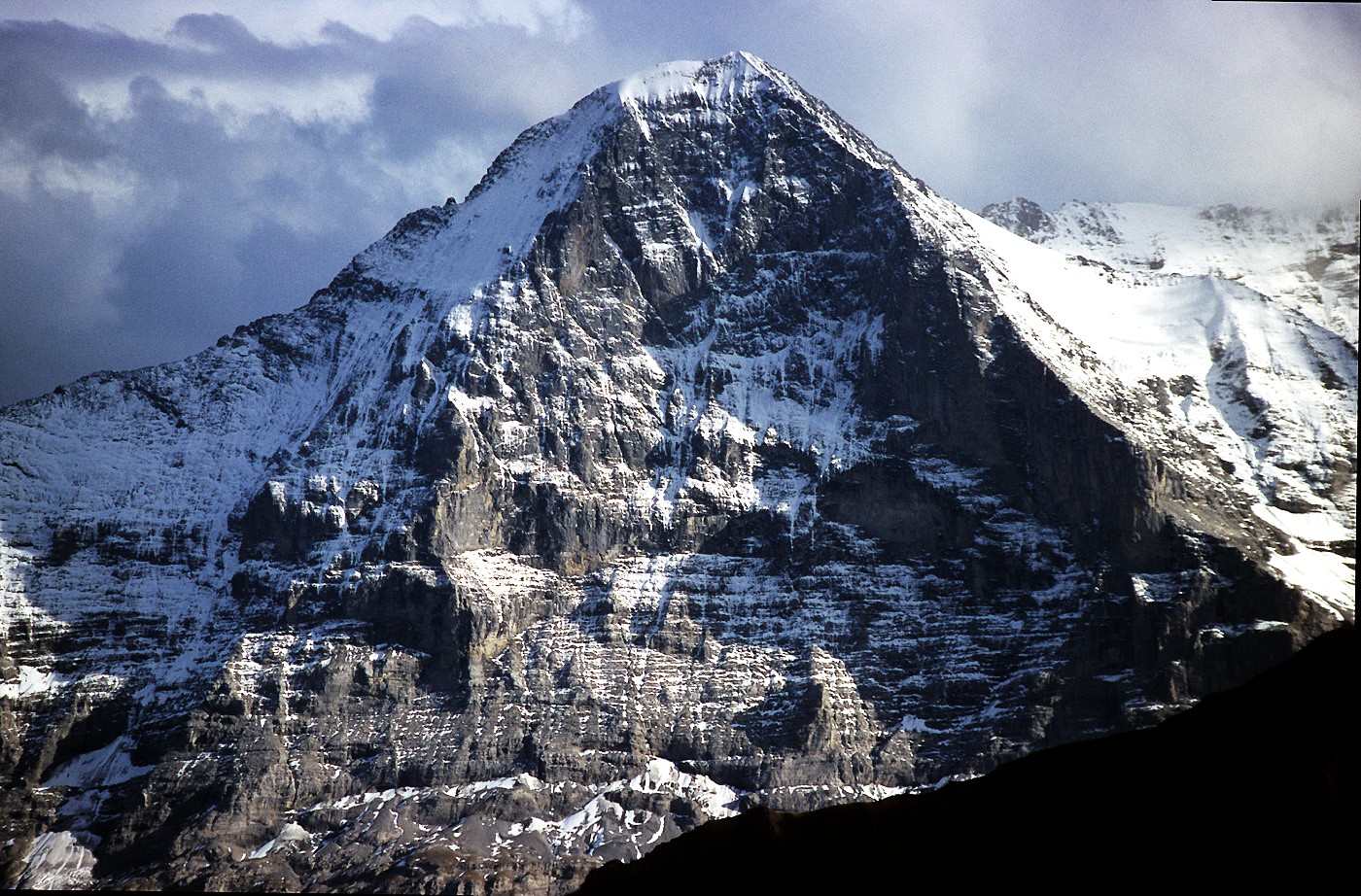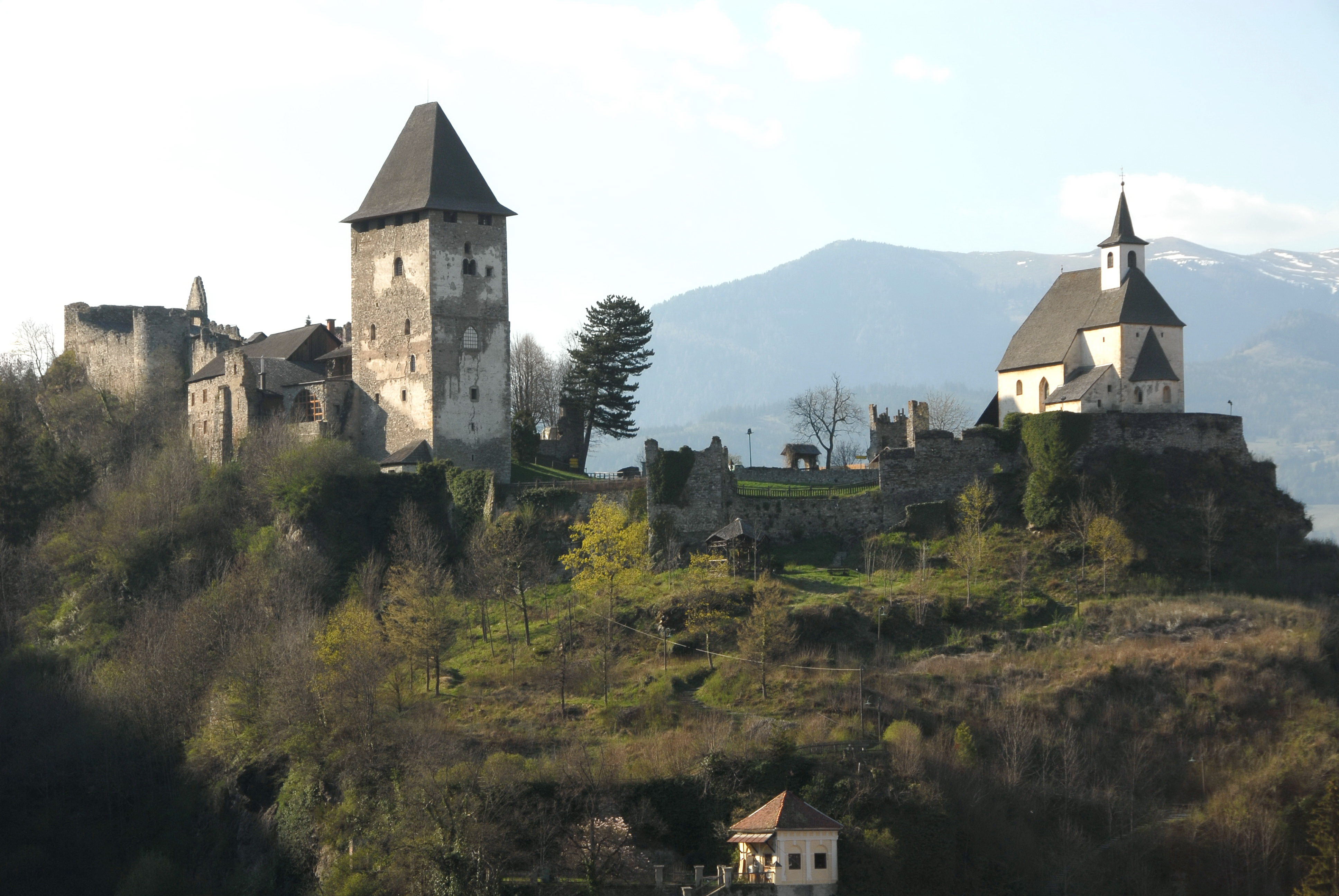|
Hüttenberg, Austria
Hüttenberg () is a market town in the district of Sankt Veit an der Glan in the Austrian state of Carinthia. Geography The municipality includes the Görtschitz valley in the southern foothills of the Seetal Alps. On the north, it borders Styria Styria ( ; ; ; ) is an Austrian Federal states of Austria, state in the southeast of the country. With an area of approximately , Styria is Austria's second largest state, after Lower Austria. It is bordered to the south by Slovenia, and cloc .... Neighboring municipalities are Reichenfels, Bad Sankt Leonhard, and Wolfsberg, Carinthia, Wolfsberg on the east, Klein Sankt Paul on the south, and Guttaring and Friesach on the west. Personalities * Heinrich Harrer was born in the town and a museum is dedicated to him today. References Cities and towns in Sankt Veit an der Glan District {{Carinthia-geo-stub ... [...More Info...] [...Related Items...] OR: [Wikipedia] [Google] [Baidu] |
Municipality (Austria)
In the Republic of Austria, the municipality (, sometimes also ) is the administrative division encompassing a single village, town, or city. The municipality has municipal corporation, corporate status and local self-government on the basis of parliamentary democracy, parliamentary-style representative democracy: a municipal council () elected through a form of party-list proportional representation, party-list system enacts municipal laws, a municipal executive board () and a mayor (, grammatical gender, fem. ) appointed by the council are in charge of municipal administration. Austria is currently (January 1, 2020) partitioned into 2,095 municipalities, ranging in population from about fifty (the village of Gramais in Tyrol (state), Tyrol) to almost two million (the city of Vienna). There is no unincorporated area, unincorporated territory in Austria. Basics The existence of municipalities and their role as carriers of the right to self-administration are guaranteed by the ... [...More Info...] [...Related Items...] OR: [Wikipedia] [Google] [Baidu] |
Seetal Alps
The Seetal Alps () are a mountain range in the Lavanttal Alps, Lavanttal or Noric Alps in Austria south of the River Mur (river), Mur between Scheifling and Zeltweg. Their highest peak is the Zirbitzkogel (2,396 m). Topography The Seetal Alps are bounded to the north by the Mur valley, to the east by the Obdach Saddle, to the south by the Klippitztörl and to the west by the Neumarkt Saddle. The majority of the range lies within the Austrian state of Styria, only from the Klippitztörl does it extend into Carinthia (state), Carinthia. The most important summits, from north to south, are: *Weißeck (1,743 m) *Brandriegel (1,721 m) *Hohe Ranach (1,981 m) *Erslstand (2,124 m) *Wenzelalpe (2,151 m) *Kreiskogel (2,306 m) with the very difficult Lukas-Max ''klettersteig'' at www.bergsteigen.com [...More Info...] [...Related Items...] OR: [Wikipedia] [Google] [Baidu] |
Heinrich Harrer
Heinrich Harrer (; 6 July 1912 – 7 January 2006) was an Austrian mountaineer, explorer, writer, sportsman, geographer, and briefly SS sergeant. He was a member of the four-man climbing team that made the first ascent of the North Face of the Eiger, the "last problem" of the Alps, in July 1938. Harrer and the team flew the Nazi flag atop the mountain. Harrer had joined the Nazi Party shortly after the annexation of Austria in March 1938, and was personally received by Hitler after the climb. A year later in 1939, he and the climbing team went on an expedition to the Indian Himalayas, where they were arrested by British colonial authorities due to the outbreak of World War II. He eventually escaped to Tibet, staying there until 1951 and never seeing active combat from that point onwards. He wrote the books '' Seven Years in Tibet'' (1952) and '' The White Spider'' (1959). Early life Heinrich Harrer was born 6 July 1912 in Hüttenberg, Austria, in the district of Sankt Veit a ... [...More Info...] [...Related Items...] OR: [Wikipedia] [Google] [Baidu] |
Friesach
Friesach () is a historic town in the Sankt Veit an der Glan (district), Sankt Veit an der Glan district of Carinthia (state), Carinthia, Austria. First mentioned in an 860 deed, it is known as the oldest town in Carinthia. Geography Location Friesach covers an area of 120.83 km2 and its mean elevation is 631 meters above sea level. It is located in northern Carinthia near the border with Styria, about north of its capital Klagenfurt. Populated places The municipality of Friesach consists of the following cadastral community, cadastral communities (or ''katastralgemeinden''): Friesach, St. Salvator and Zeltschach; while further subdivided into 43 populated places (with population in brackets as of 1 January 2022). * Dobritsch (13) * Dörfl (13) * Engelsdorf (377) * Friesach (Breže) (1933) * Gaisberg (77) * Grafendorf (246) * Guldendorf (4) * Gundersdorf (5) * Gunzenberg (8) * Gwerz (51) * Harold (18) * Hartmannsdorf (11) * Hundsdorf (5) * Ingolsthal (90) * Judendor ... [...More Info...] [...Related Items...] OR: [Wikipedia] [Google] [Baidu] |
Guttaring
Guttaring () is a town in the district of Sankt Veit an der Glan in the Austrian state of Carinthia Carinthia ( ; ; ) is the southernmost and least densely populated States of Austria, Austrian state, in the Eastern Alps, and is noted for its mountains and lakes. The Lake Wolayer is a mountain lake on the Carinthian side of the Carnic Main .... Geography Guttaring lies between Krappfeld and Görtschitztal and is traversed by the Silberbach. References Cities and towns in Sankt Veit an der Glan District {{Carinthia-geo-stub ... [...More Info...] [...Related Items...] OR: [Wikipedia] [Google] [Baidu] |
Klein Sankt Paul
Klein St. Paul () is a town in the district of St. Veit an der Glan in the Austrian state of Carinthia. Geography Klein St. Paul lies in the central Görtschitz valley about 36 km northeast of Klagenfurt am Wörthersee Klagenfurt am WörtherseeLandesgesetzblatt 2008 vom 16. Jänner 2008, Stück 1, Nr. 1: ''Gesetz vom 25. Oktober 2007, mit dem die Kärntner Landesverfassung und das Klagenfurter Stadtrecht 1998 geändert werden.'/ref> (; ; ; ; Carinthian dialect .... Communities: Buch, Drattrum, Dullberg, Filfing, Grünburg, Katschniggraben, Kirchberg, Kitschdorf, Klein St. Paul, Maria Hilf, Mösel, Müllergraben, Oberwietingberg, Prailing, Prailing, Raffelsdorf, Sittenberg, Unterwietingberg, Wietersdorf, Wietersdorf, Wieting References External links www.klein-st-paul.at- city website Cities and towns in Sankt Veit an der Glan District {{Carinthia-geo-stub ... [...More Info...] [...Related Items...] OR: [Wikipedia] [Google] [Baidu] |
Wolfsberg, Carinthia
Wolfsberg () is a List of cities and towns in Austria, town in Carinthia (state), Carinthia, Austria, the capital of Wolfsberg District. Geography The town is situated within the Lavanttal Alps, west of the Koralpe range in the valley of the Lavant (river), Lavant River, a left tributary of the Drava. In the northeast, the road up to the Packsattel mountain pass connects Wolfsberg with Voitsberg in Styria. Wolfsberg's municipal area of is the fourth largest in Austria. The municipality comprises 40 Cadastral community, cadastral communities (Surface area in hectares 31. Dezember 2019): The municipal area is divided into 65 villages (population in brackets as of 1 January 2020): History The area of Wolfsberg belonged to the estates within the medieval Duchy of Carinthia that were ceded to the Prince-Bishopric of Bamberg, probably already by Emperor Henry II, Holy Roman Emperor, Henry II in 1007. The castle above the town was first mentioned as ''Wolfsperch'' in an 1178 deed ... [...More Info...] [...Related Items...] OR: [Wikipedia] [Google] [Baidu] |
Bad Sankt Leonhard Im Lavanttal
Bad Sankt Leonhard im Lavanttal () is a spa town in the district of Wolfsberg (district), Wolfsberg in the Austrian state of Carinthia (state), Carinthia. Geography The municipality lies in the upper Lavant (river), Lavant valley (''Lavanttal'') north of the district capital Wolfsberg, Carinthia, Wolfsberg. The municipal area comprises the Cadastral community, cadastral communities of Erzberg, Görlitzen, Kliening, Bad Sankt Leonhard proper, Schiefling, Schönberg, Theißing, and Twimberg. Bad Sankt Leonhard has access to the Süd Autobahn (A2). The Lavant Viaduct across the valley was inaugurated in 1986; with a height of , it is the second highest bridge in Austria. History The area was settled since Ancient Rome, ancient times, when a Roman road led through the Lavanttal up to the Obdach Saddle pass and the Mur (river), Mur valley in present-day Upper Styria. In the 11th century, the surrounding Duchy of Carinthia, Carinthian estates were enfeoffed to the Prince-Bishopric of ... [...More Info...] [...Related Items...] OR: [Wikipedia] [Google] [Baidu] |
Reichenfels
Reichenfels is a town in the district of Wolfsberg in the Austrian state of Carinthia. Geography Reichenfels lies in the upper Lavant River valley between the Packalp and the Seetal Alps on the boundary with Styria Styria ( ; ; ; ) is an Austrian Federal states of Austria, state in the southeast of the country. With an area of approximately , Styria is Austria's second largest state, after Lower Austria. It is bordered to the south by Slovenia, and cloc .... Neighbouring municipalities in Carinthia are Bad Sankt Leonhard and Hüttenberg. References Cities and towns in Wolfsberg District {{Carinthia-geo-stub ... [...More Info...] [...Related Items...] OR: [Wikipedia] [Google] [Baidu] |
Styria
Styria ( ; ; ; ) is an Austrian Federal states of Austria, state in the southeast of the country. With an area of approximately , Styria is Austria's second largest state, after Lower Austria. It is bordered to the south by Slovenia, and clockwise, from the southwest, by the other Austrian states of Carinthia, Salzburg (federal state), Salzburg, Upper Austria, Lower Austria, and Burgenland. The state's capital is Graz, the second largest city in Austria after only Vienna. Name The March of Styria derived its name from the original seat of its ruling Otakars, Otakar dynasty: Steyr, in today's Upper Austria, which in turn derives its name from the namesake river of Steyr, stemming from the Celtic Stiria. In the native German the area is still called "Steiermark", while in English the Latin name "Styria" is used. Until the late 19th century however, the German name "Steyer", a slightly modernized spelling of Steyr, was also common. The ancient link between the city of Steyr and S ... [...More Info...] [...Related Items...] OR: [Wikipedia] [Google] [Baidu] |
Carinthia (state)
Carinthia ( ; ; ) is the southernmost and least densely populated Austrian state, in the Eastern Alps, and is noted for its mountains and lakes. The Lake Wolayer is a mountain lake on the Carinthian side of the Carnic Main Ridge, near the Plöcken Pass.The main language is Austrian German, with its non-standard dialects belonging to the Southern Bavarian group; Carinthian Slovene dialects, forms of a South Slavic language that predominated in the southeastern part of the region up to the first half of the 20th century, are now spoken by a small minority in the area. Carinthia's main industries are tourism, electronics, engineering, forestry, and agriculture. Name The etymology of the name "Carinthia", similar to Carnia or Carniola, has not been conclusively established. The ''Ravenna Cosmography'' (about AD 700) referred to a Slavic "Carantani" tribe as the eastern neighbours of the Bavarians. In his ''History of the Lombards'', the 8th-century chronicler Paul ... [...More Info...] [...Related Items...] OR: [Wikipedia] [Google] [Baidu] |
Sankt Veit An Der Glan (district)
The District of St. Veit an der Glan () is an administrative district in Carinthia, Austria. Communities The district of St. Veit an der Glan is divided into 20 municipalities, of which 4 are towns and 9 are market towns; which are further sub-divided into villages and localities. Towns * Althofen ( Slov.: ''Stari Dvor'') (4,826) ** Aich, Althofen, Eberdorf, Epritz, Krumfelden, Muraniberg, Rabenstein, Rain, Töscheldorf, Treibach * Friesach ( Slov.: ''Breže'') (4,901) ** Dobritsch, Dobritsch, Dörfl, Engelsdorf, Friesach, Gaisberg, Grafendorf, Guldendorf, Gundersdorf, Gunzenberg, Gwerz, Harold, Hartmannsdorf, Hundsdorf, Ingolsthal, Judendorf, Kräuping, Leimersberg, Mayerhofen, Moserwinkl, Oberdorf I, Oberdorf II, Olsa, Pabenberg, Reisenberg, Roßbach, Sattelbogen, Schratzbach, Schwall, Silbermann, St. Johann, St. Salvator, St. Stefan, Staudachhof, Stegsdorf, Timrian, Wagendorf, Wels, Wiegen, Wiesen, Zeltschach, Zeltschachberg, Zienitzen, Zmuck * St. Veit an der Glan ( Slov ... [...More Info...] [...Related Items...] OR: [Wikipedia] [Google] [Baidu] |




